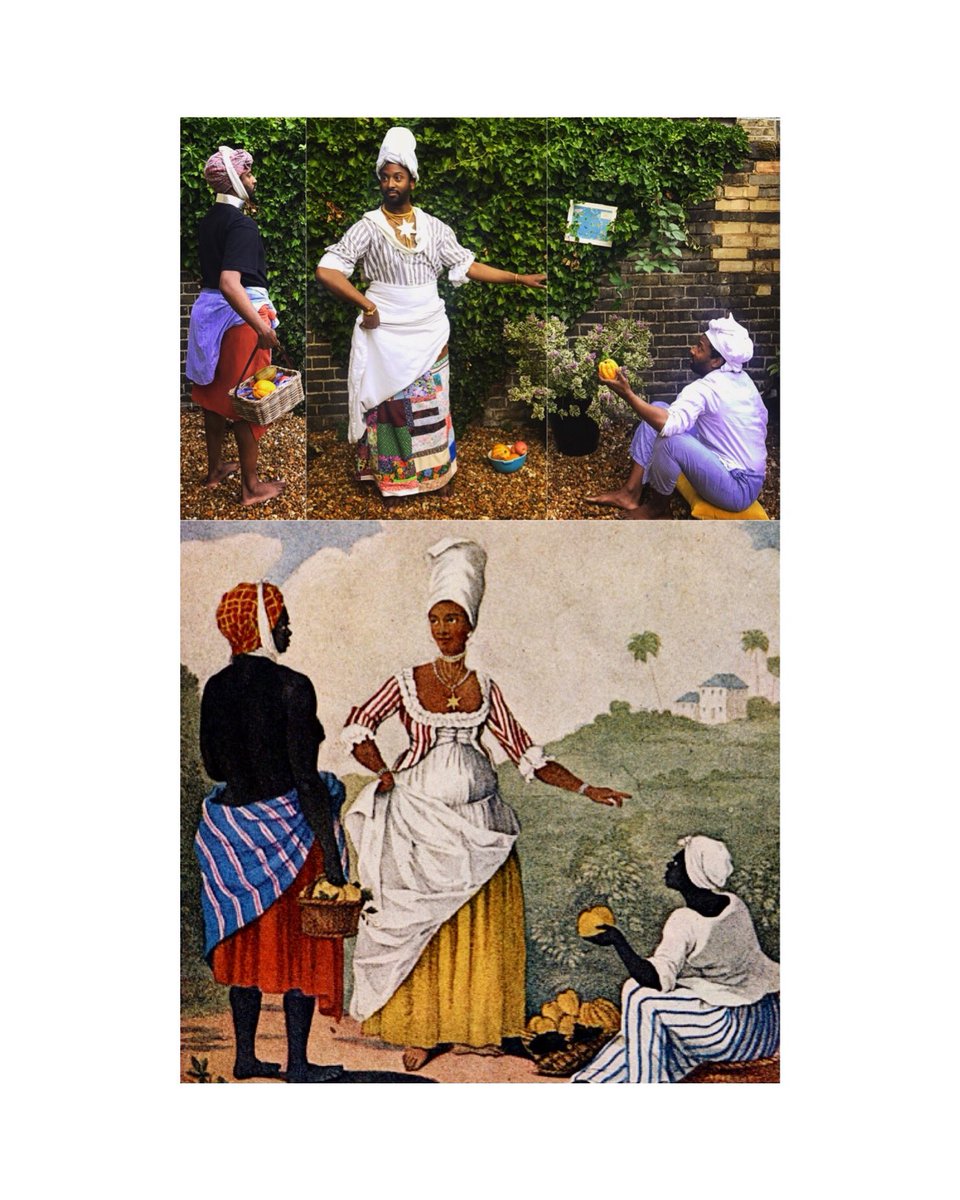Agostino Brunias: The Barbados Mulatto Girl (1779). The mixed-race subject commands a scene exploring the elaborate hierarchies in the English West Indies. Reworked with granny’s patchwork and Caribbean map. Rediscovering #blackportraiture through #gettymuseumchallenge.
The fixed correlation of class and colour was compatible with slave-owning ideology, and the order of precedence from white planter at the top, people of colour in the middle, and black slave at the bottom was in harmony with the 18th c idea of the Great Chain of Being.
Unlike his contemporaries, Brunias gave an image to the 'mulattos', meaning the mixed-race descendants of both white and black heritage. This historical classification was given to my great x4 grandmother, born in Barbados the year after this portrait was painted.
The seated black woman holds up a large pummelo (known informally the West Indies beginning in the seventeenth century as a shaddock). Rank is indicated not only by the nuances of skin colour but by the height of each individual within the picture and the costume worn.
The central figure wears a striped jacket of white muslin, a striking neckpiece, a petticoat, and a headdress handkerchief of “gauze or silk which they wore in the fashion of a turban.” In the distance beyond, the plantation great house is seen on a hill.
The standing black woman on the left appears to be wearing an iron collar around her neck, fastened today her head by two white ties. This may be the “pottock”, in which iron rings are fastened around the neck and tied to the head by two long pieces riveted to iron rings,
as an instrument of punishment for runaway slaves; the fact that she does not face the viewer is perhaps an indication of Brunias’s desire to avoid reference to the brutalities inflicted on slaves in their daily lives. (Info from Art UK and The Image of the Black in Western Art)

 Read on Twitter
Read on Twitter


